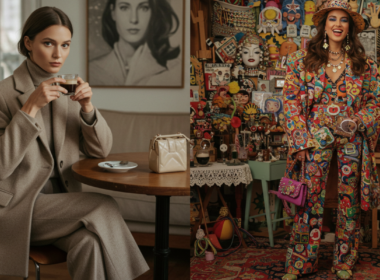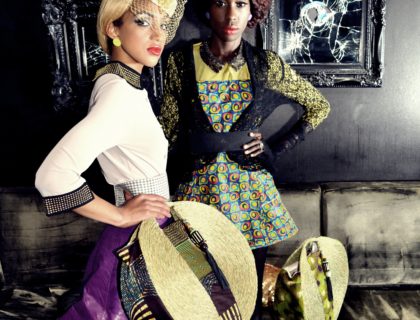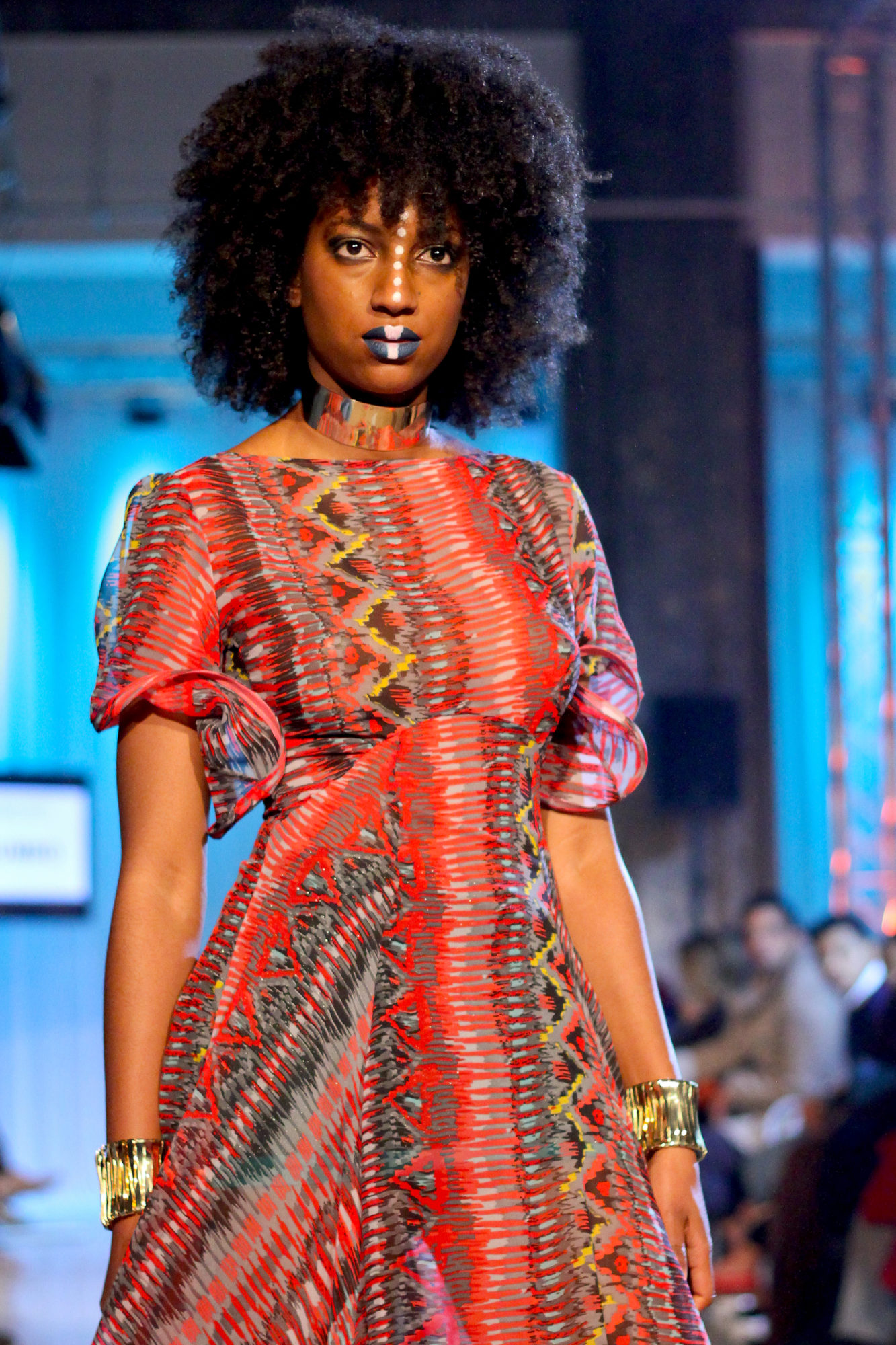In the past, many have thrown the responsibility of sustainability in fashion on the production of fashion however, it is important that we understand that sustainability in fashion is about how we produce as well as how we consume. As a sustainable fashion brand would consider environmentally-friendly practices of production while producing a product that has a lower impact on the environment so should a sustainable consumer consume consciously.

“More sustainable fashion can be defined as clothing, shoes and accessories that are manufactured, marketed and used in the most sustainable manner possible, taking into account both environmental and socio-economic aspects. In practice, this implies continuous work to improve all stages of the product’s life cycle, from design, raw material production, manufacturing, transport, storage, marketing and final sale, to use, reuse, repair, remake and recycling of the product and its components. “
-Dr. Brismar, Green Strategy)
Sustainable fashion has to be a key word driven by action within the fashion industry today more than ever because this same fashion industry that we swear we would die for, is the same fashion industry that creates excessive use of toxic chemicals, pesticides and synthetic fibres make this industry the 2nd most polluting industry in the world.
In the last two decades something has changed in the fashion industry. Clothes have become cheaper, trend cycles have sped up and shopping has become a monthly if not weekly event for many of us. While thousands of brands are adopting a low-cost, high-turnover ‘fast fashion’ model, we are buying and throwing away more clothes than ever before. In order to significantly aid the response to the global waste management challenge, we also need to consider using less or reusing as much as possible before recycling, to minimise waste.
I would also like to advise fashion brands and designers to take it upon themselves to sensitise their consumer-base by educating them on what is means to be sustainable and why they need to consume sustainably. Our environment is in big trouble and because fashion is something almost everyone can relate to due to the fact that we all consume fashion, we have an opportunity to be the change without breaking the bank. It’s all about the choices we make from here moving on.
Here are 5 ways on how you as a fashion consumer can help reduce the carbon footprint through changing your way of consumption;
1. Buy what you need

Unfortunately, we cannot slow down the effects of climate change by buying more stuff. We need buy less in order to reduce our carbon footprint.
When I finally stopped my rat race because the covid-19 pandemic crisis said stop, I found time to go through alot mentally, physically, emotionally and all my general lifestyle in detail. Looking through my own personal wardrobe which is still a working progress, I panicked. So many clothes and not enough time to wear, I thought to myself.
In response to my closet, as is slowly got used to the fact that I may not be going far anytime soon, I decided to explore and enjoy my wardrobe like never before. My lockdown indoor outings had me pulling out gowns, ensembles, coats and so much of what I had barely introduced to the world. Some days is was DeniMania, while others were just a few more beautiful dresses that brought my energy alive. I must admit that alongside planning, preparing and enjoying my dinner, my fashion pieces have become the other better part of my lockdown days.
They say that if you don’t miss it, you probably don’t need it, but in my case, I have finally got the opportunity to wear beautiful staples I forgot about a long time ago so that ‘waste’ does not become a part of my personal fashion lifestyle any more. What about you? What’s happening with your wardrobe and fashion lately?
2. Invest In quality vs quantity

Thousands of fashion brands have been adopting a low-cost, high-turnover ‘fast fashion’ model who’s negative impact includes the use of cheap, toxic textile dyes. With the fashion industry identified as the second largest polluter of clean water globally after agriculture and the fact that there is an increase in buying and disposing of clothes more than ever before, it’s about time to spend more on timeless, quality pieces that you can wear and appreciate many years down the line.
On my Fashion Lab Africa podcast & vodcast, I set the show on a high by posing the big question “Who are you wearing?” because I believe that every guest on the show as well as the audience get to double-click on details around the production of what they are wearing, the quality, the workmanship, the production process, workers behind it and the impact it has on the environment.
“The pressure to reduce costs and speed up production time means that environmental corners are cut in the name of profit. Unfair pay and unsafe working conditions are all too common for millions of garment industry workers, often women and sometimes even children. It just doesn’t seem right to me that some of the world’s most vulnerable people are paying the ultimate price for fashion.”
Buy quality!
3. Upcycle or recycle

Lately, there’s been a spring of many businesses incorporating upcycling, an environmentally beneficial option as a part of their efforts to have a more sustainable business model. Aside from minimising the volume of discarded materials and waste being sent to landfill each year, upcycling also reduces the need for production using new or raw materials which means a reduction in air pollution, water pollution, greenhouse gas emissions and often a conservation of global resources.
As a fashion brand and fashion lover, I happen to know and understand not just the benefits, but also the processes of reviving fashion through upcycling sustainably. Besides my showroom boutique policy that encourages my clientele to come back and upcycle the pieces they buy from me, my personal wardrobe has lived through many phases. Despite the fact that not all upcycling and recycling is sustainable, I find that this process releases a sense of refreshment not only for the wearer for just as much for the piece of clothing that gets to revive in a new form.
As human beings, we get a chance to constantly evolve mentally, physically and emotionally, lets give our wardrobe a chance to reincarnate and last longer to save our environment.
4. Buy Local

It may come to you as a surprise, however fashion that is designed, manufactured and sold within a shorter distance or within the country you live in naturally has a lower carbon-footprint than collections that have travelled between cities or countries. Through buying local, you and I get to create employment while gaining a better understanding and control around workers working conditions. As fashion waste disposal practices are still inconsistent from one country to another, it becomes much easier to regulate these practices within one’s own region.
5. Donate or hand-down clothing you are no longer wearing (if in good condition)

I don’t see nothing wrong with hand-downs if the pieces are in good condition. Share your overflow and bring more meaning and a sense of fulfilment to your life.
Now that you know better, do the right thing.
Yours fabulously,
Multidisplinary Creative Entrepreneur,










